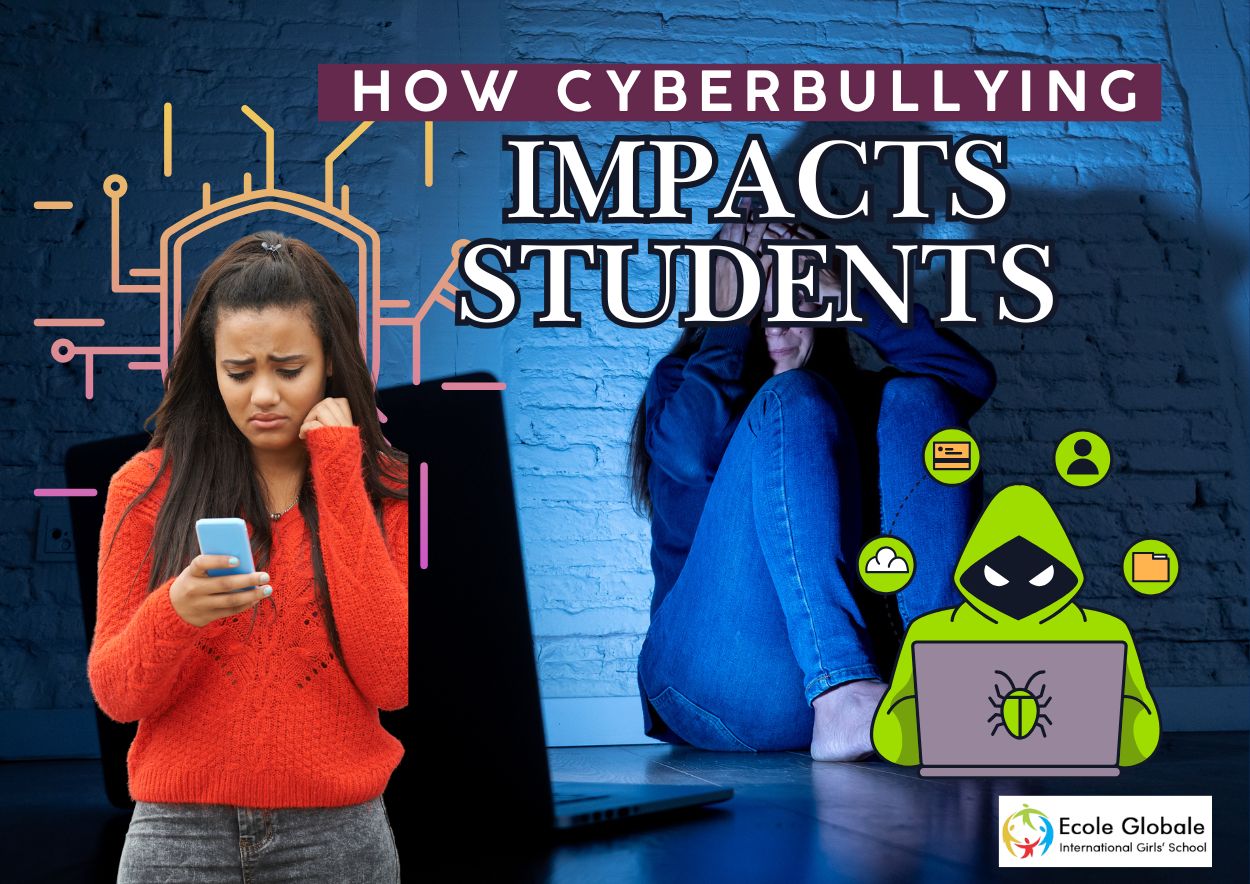In today’s interconnected world, the internet has become an integral part of students’ lives. From social media and messaging apps to gaming and online forums, technology offers countless benefits. However, it also presents challenges—one of the most concerning being cyberbullying. This modern form of harassment deeply affects students and demands urgent attention from parents, educators, and policymakers.
What is Cyberbullying?

It involves using technology to intimidate, humiliate, or harm someone. Unlike traditional bullying, it isn’t confined to specific times or places. It follows students wherever they go, making its impact constant and pervasive. Cyberbullying can take various forms, including sending hurtful messages, spreading false rumors, or posting embarrassing photos online. Its digital nature makes it easy for bullies to hide their identities and for harmful content to spread quickly, leaving victims feeling overwhelmed and powerless.
Some common examples of cyberbullying include:
- Sending hurtful messages: Texts or emails intended to insult or intimidate.
- Posting private content: Sharing someone’s personal photos or videos without consent.
- Spreading rumors online: Disseminating false or embarrassing information.
- Excluding peers: Deliberately leaving someone out of online groups or conversations.
The Impact of Cyberbullying on Students

The effects of cyberbullying extend far beyond the screen, influencing nearly every aspect of a student’s life. Emotionally, victims often experience anxiety, depression, and feelings of isolation. They may lose confidence in themselves and develop a fear of engaging with peers or participating in online activities.
- Educate Students and Parents
- Host workshops on digital responsibility and online safety.
- Teach students about the consequences of cyberbullying and how to report it.
- Implement Strict Policies
- Develop clear rules against cyberbullying with well-defined consequences.
- Encourage students to report incidents anonymously if needed.
- Provide Counseling
- Ensure access to school counselors for victims and those accused of bullying.
- Address the emotional and psychological needs of all involved parties.
- Foster Awareness Campaigns
- Organize events like Anti-Cyberbullying Week to promote empathy and inclusivity.
- Display posters and share videos highlighting the dangers of online harassment.
How Schools Can Address Cyberbullying

Schools play a critical role in combating cyberbullying. Creating a safe and supportive environment is essential to helping students navigate the challenges of the digital age.
First, schools should incorporate lessons on digital citizenship into their curricula. Teaching students to use technology responsibly and respectfully can significantly reduce instances of cyberbullying.
Clear anti-bullying policies are equally important. Schools should outline specific consequences and establish confidential reporting systems that encourage victims and bystanders to speak up.
Providing access to counselors who specialize in bullying-related issues ensures that affected students receive the support they need to recover.
Raising awareness is another effective strategy. Hosting workshops and campaigns about the effects of cyberbullying can foster empathy and help students recognize the importance of standing against such behavior.
These initiatives should also involve parents, equipping them with tools to guide their children in managing online interactions.
How Parents Can Support Their Children

Parents are vital allies in addressing cyberbullying. Open communication is the foundation of support—encourage your child to share their online experiences without fear of judgment.
Be proactive in monitoring their digital activity, ensuring they engage with safe and age-appropriate platforms.
If your child becomes a victim of bullying, reassure them that they are not at fault. Work with their school and, if necessary, law enforcement to address the issue. At the same time, teach them resilience and coping strategies to navigate difficult situations.
Empowering Students to Be Part of the Solution
Students themselves have the power to combat bullying. Encouraging kindness, empathy, and respect in online interactions can create a safer digital community.
It’s important for students to understand the impact of their words and actions, both online and offline.
When witnessing cyberbullying, students should feel empowered to report it and offer support to the victim. Together, small acts of courage and kindness can make a big difference in reducing online harassment.
Conclusion
Cyberbullying is a growing concern, but it’s one that can be addressed with collective effort. Schools, parents, and students must work hand in hand to foster an environment of respect and empathy.
By promoting digital responsibility, raising awareness, and supporting victims, we can ensure that the internet remains a space for learning, connection, and growth.









